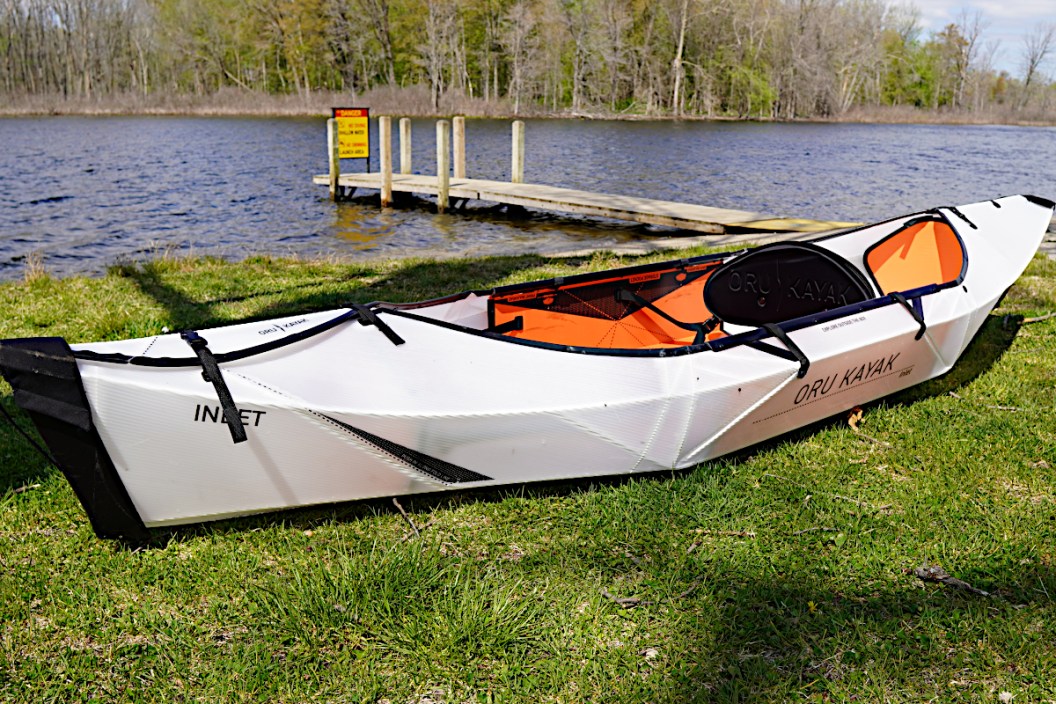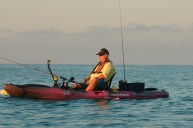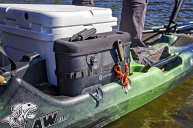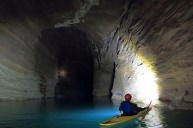The Oru kayak seeks to solve the biggest issues facing regular watercraft.
Many outdoor enthusiasts enjoy kayaking. It is a great way to relax in calm waters and enjoy nature. It is even better if you enjoy fishing or camping and can combine the activities. However, there are some negatives that any gear junkie can relate with when it comes to kayaks. For one, they eat up a lot of storage space.
They are also often extremely heavy, making it a chore to carry from vehicle to water and storage. Often, one must also buy a large and expensive roof rack for the paddler to transport via a vehicle.
After all, this is the 21st century. At this point we should have portable kayaks that make your float trips as easy as walking out the door. Well, at least one company was thinking about that and the solution is the Oru origami kayak. A compact, folding kayak designed with portability in mind. We recently got the chance to test their Inlet model here in Michigan and it was a fascinating experience.
The Oru Inlet
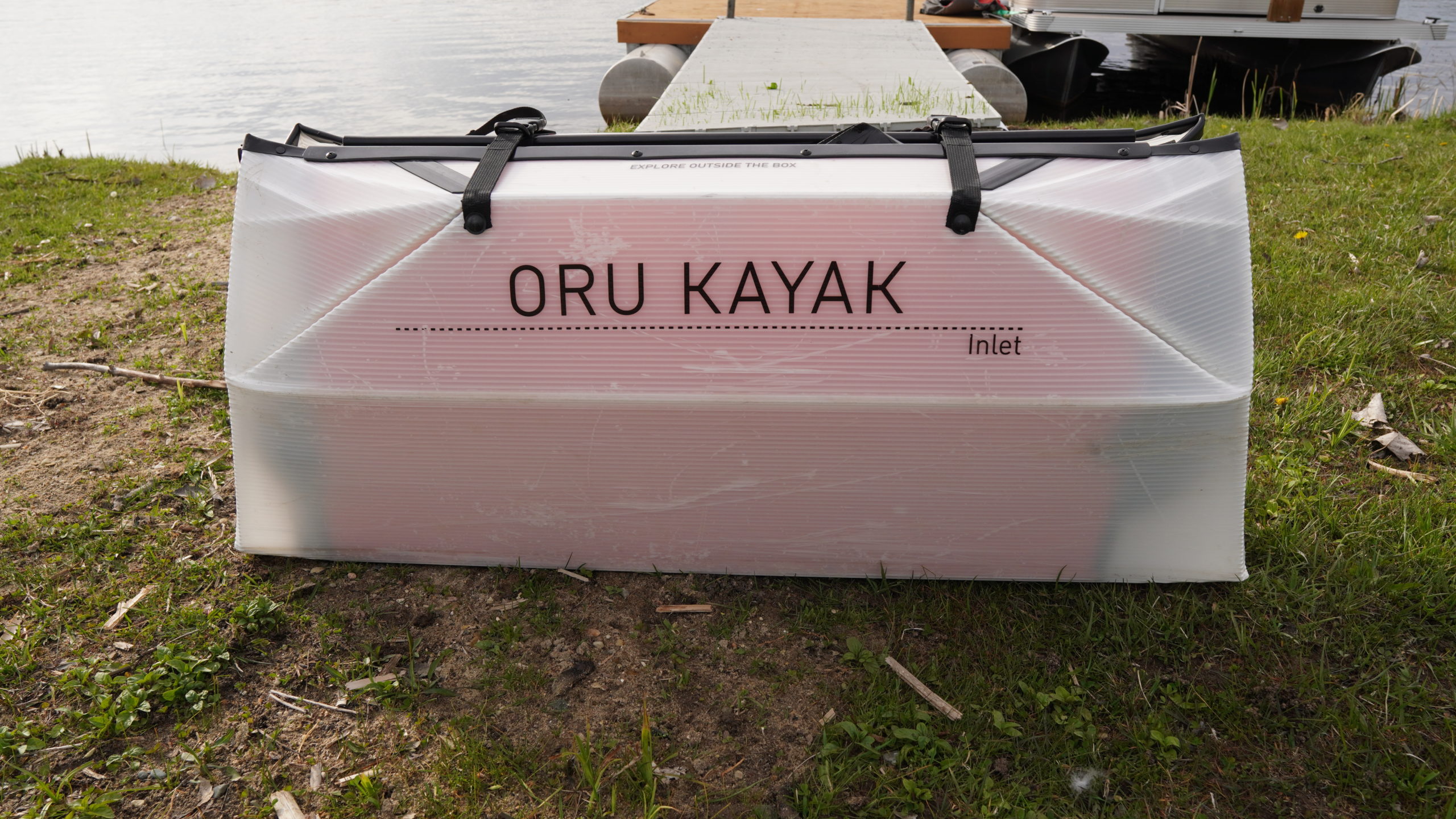
Travis Smola
Oru builds many different kayaks for different styles of paddling. The Haven is a tandem model. The Beach LT is more of a calm water paddler, the Coast XT is built for open water, and ocean, the Oru Bay ST is a closed cockpit model better suited for rougher waters and kayak camping. The one Oru lent me is their smallest foldable kayak, the Inlet. It is a compact craft, measuring 9' 8" in length when fully unfolded.
The way the Oru packs is incredible. When folded up, the Inlet weighs just 20 pounds and was small enough to throw in the back of my Jeep Liberty SUV with room to spare. I also transported it on a golf cart with ease, so it gets major points up front for storability and ease of transport. Because my most hated aspect of any kayak trip is the loading up and placing back into storage. With the Oru, going to the lake is as simple as jumping in your vehicle for a trip to the grocery store.

Travis Smola
The secret to these kayaks is the lightweight polypropylene materials. You have probably seen the stuff used in signs people place near businesses or in their yards before. Oru says the polypropylene in their kayaks is double layered and custom-extruded with UV treatments good for ten years. While the material is incredibly light, it does seem like the durability is there. It held up great during my tests, even when I exerted a little extra pressure to get it re-folded. Oru says each boat is good for tens of thousands of folds. The company warns that it will take about 20 minutes for most users to set it up for the first time. It took me about 13 to get it ready for its first float. Most of that time was spent watching their helpful YouTube video on how each part goes into place. Once you have it down, setup and takedown are simple, and I did it in about five minutes from there out.
The most difficult parts of the setup were probably just making sure the removable bulkheads were securely in their slotted plastic spots and making sure the buckles were securely fastened on the tension straps. Everything else was easy and straightforward.
On the water testing.
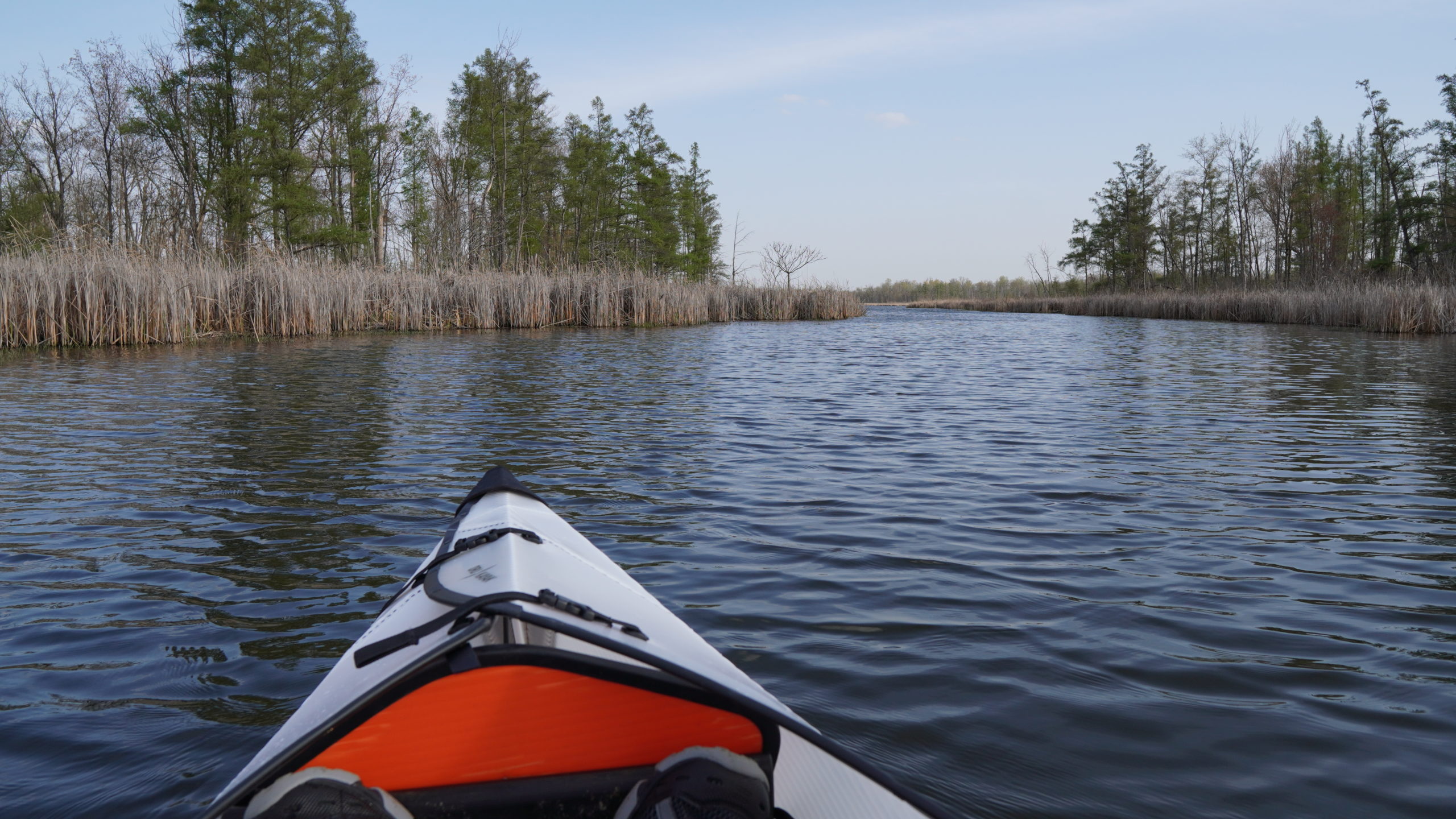
Travis Smola
I had very little time with the Oru Inlet, so I had to make the best of it. As I already stated, the biggest plus of the Oru is just the portability of this craft. It is so easy to throw in a vehicle along with your paddles and life jacket and go for an adventure, which is the dream of many kayakers. Sitting in the kayak, it does feel sturdy and stable. I felt a little safer going over rocks, logs, and other underwater obstacles than I might in an inflatable kayak. The material does flex strangely over obstacles, and you'll feel the waves a little more than a normal kayak. You can also see the waterline through the hull, which is a strange sensation. All of these things might take a little time to get used to when you're on the water.

Travis Smola
The Inlet is not really built for extreme stuff or any sort of whitewater paddling. You would not want to anyway due to the open hull construction. I see this craft as more of a casual flatwater paddler. Without any sort of neoprene spray skirt or more enclosed setting, this is more for lakes, ponds, and gentle streams than anything else. You might want to have some dry bags on board for valuables because there are no waterproof hatches. Also, stuff is likely to go everywhere on an unexpected flip. I would have tested how this kayak handles a flip, but it was just a bit too cold for that in Michigan when I did my testing.
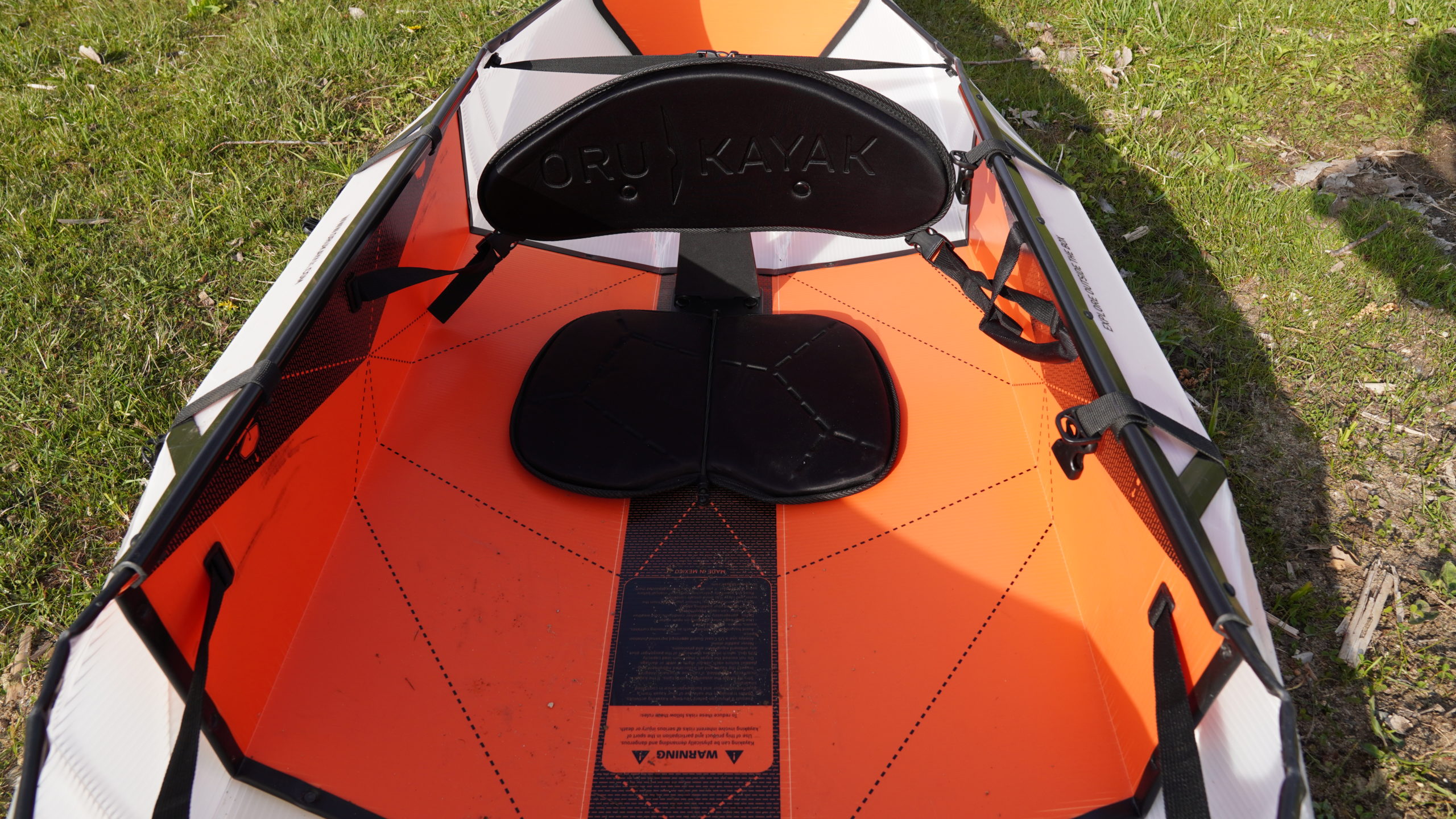
Travis Smola
It is worth noting the company sells an optional package with float bags that should help keep it upright if you go overboard. You can buy a total package with PFDs and even Oru paddles if you are looking for one stop shopping. As far as general handling goes, I was surprised how well this kayak tracks and turns. Just due to how light the materials are, I expected it to be like turning a brick on the water, or for it to get whipped around by the wind. My second paddle was on a windy day at a local lake and I had some waves break over the bow. It took it all with ease and kept going. At the end of the day, this thing handles better than my 56+ pound Pelican, which was an unexpected and pleasant surprise.
The biggest negative I encountered with the craft is also due to the size though. I'm 6' 1" and the Inlet is just a bit too cramped for me. I had the footrest all the way back at the furthest setting and my legs were still cramped inside the boat. Which is a shame because the backrest was quite comfortable. It leaves me wondering if the Bay ST would be a better option for taller people since it has a longer length and presumably more room. That said, shorter people will probably be more than comfortable in the Inlet.
The bottom line.
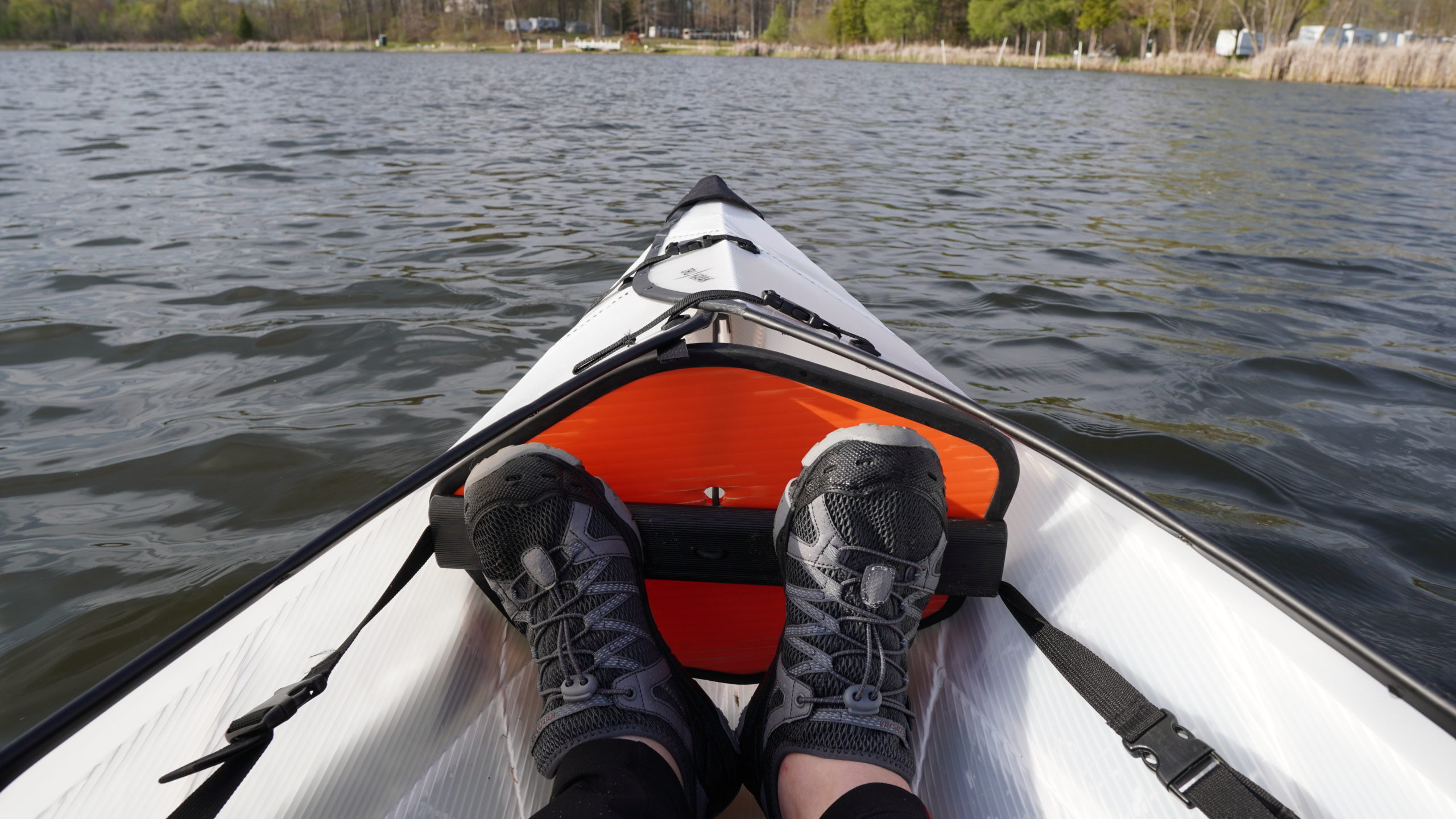
Travis Smola
The Oru kayak is an absolute winner is the size and storability department. Probably why it was such a success when the creators took it to Kickstarter. One thing we should mention is that the original origami kayak is not cheap. You are looking at $899 for the Inlet models. More for the other Orus in the line. Sure, there are kayaks that are much more expensive than that on the market. For the casual paddler though, I think that price may scare some people away. The question for this boat comes down to: are the portability and weight worth the extra money for a mostly casual craft? That is hard to say. In truth, I still have not made up my mind about it. I think for most people it is going to come down to how badly you want something this portable. That storage ability is absolutely the best thing this kayak has going for it.
I think this kayak will work best for people without garage space. If you live in a small apartment in a city like Chicago or San Francisco, this kayak is a no brainer because you can tuck it under a bed or into a closet when you are not using it. I also think it is the perfect solution for RVers, or digital nomads who live full time on the road and want to be able to do the occasional kayaking day trip without using all their precious space on a heavy plastic craft. For small lakes and rivers with light currents, I think the Inlet is going to be perfect. If you are looking for faster moving water or waves, you might want to consider one of the larger and more robust models in their line.
For more outdoor content from Travis Smola, be sure to follow him on Twitter and check out his Geocaching and Outdoors with Travis YouTube channels.
NEXT: THE AXIS DEER AND HOW THEY'RE IMPACTING PARTS OF THE UNITED STATES
WATCH
